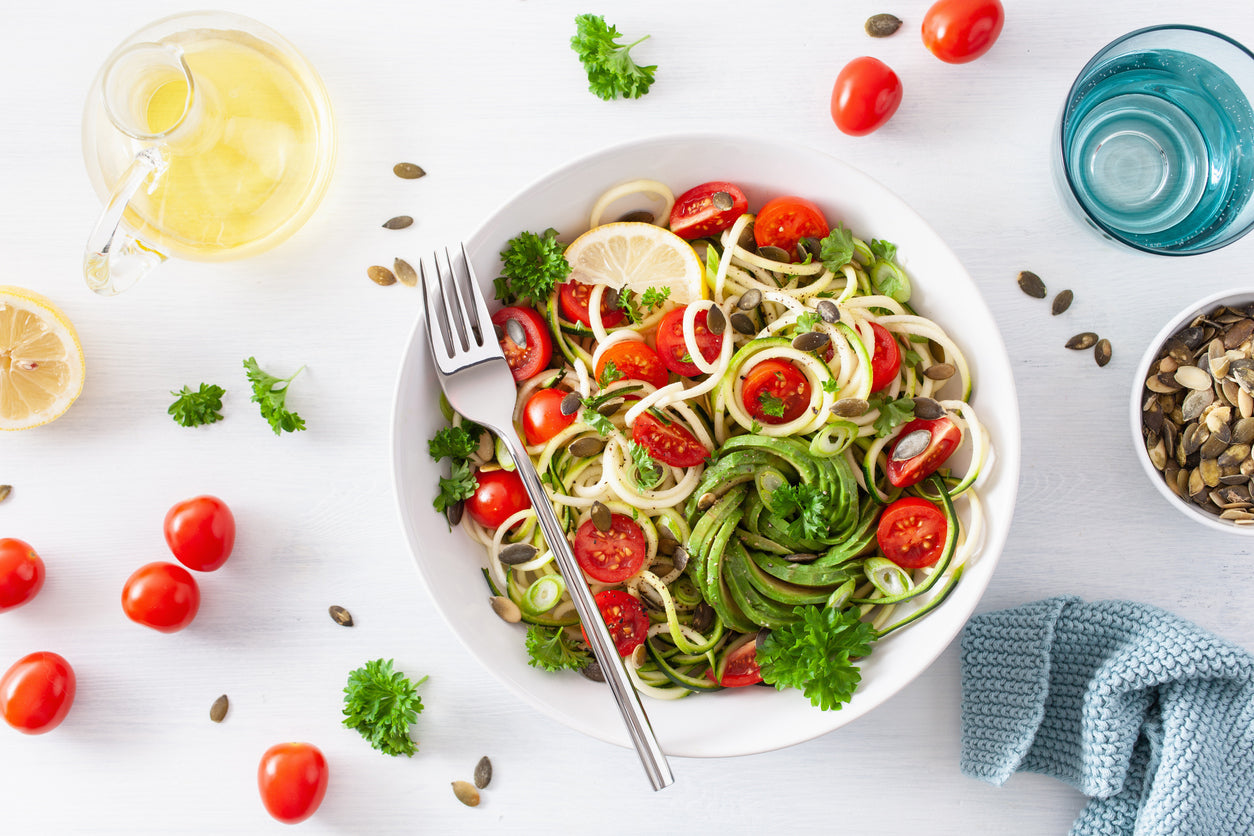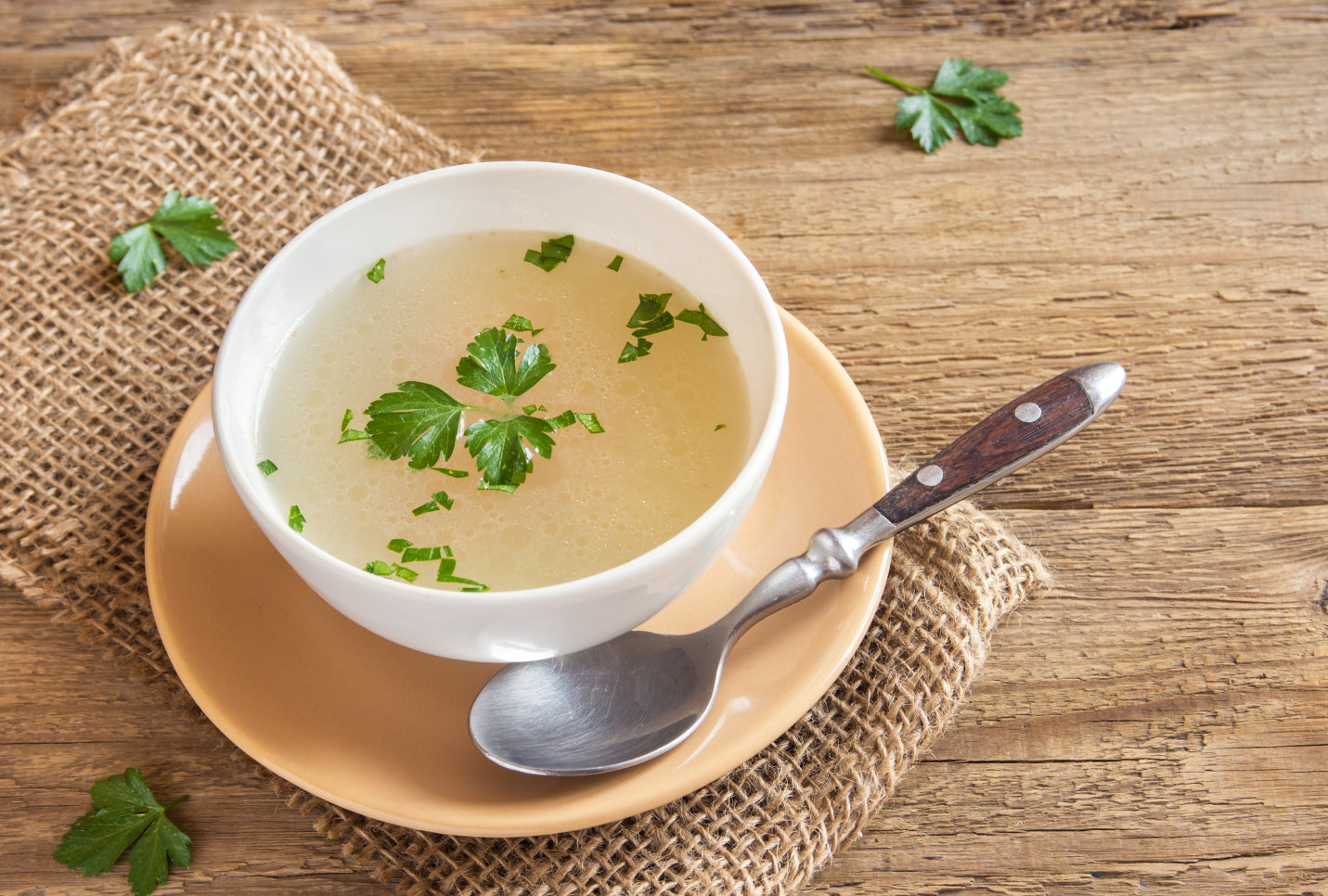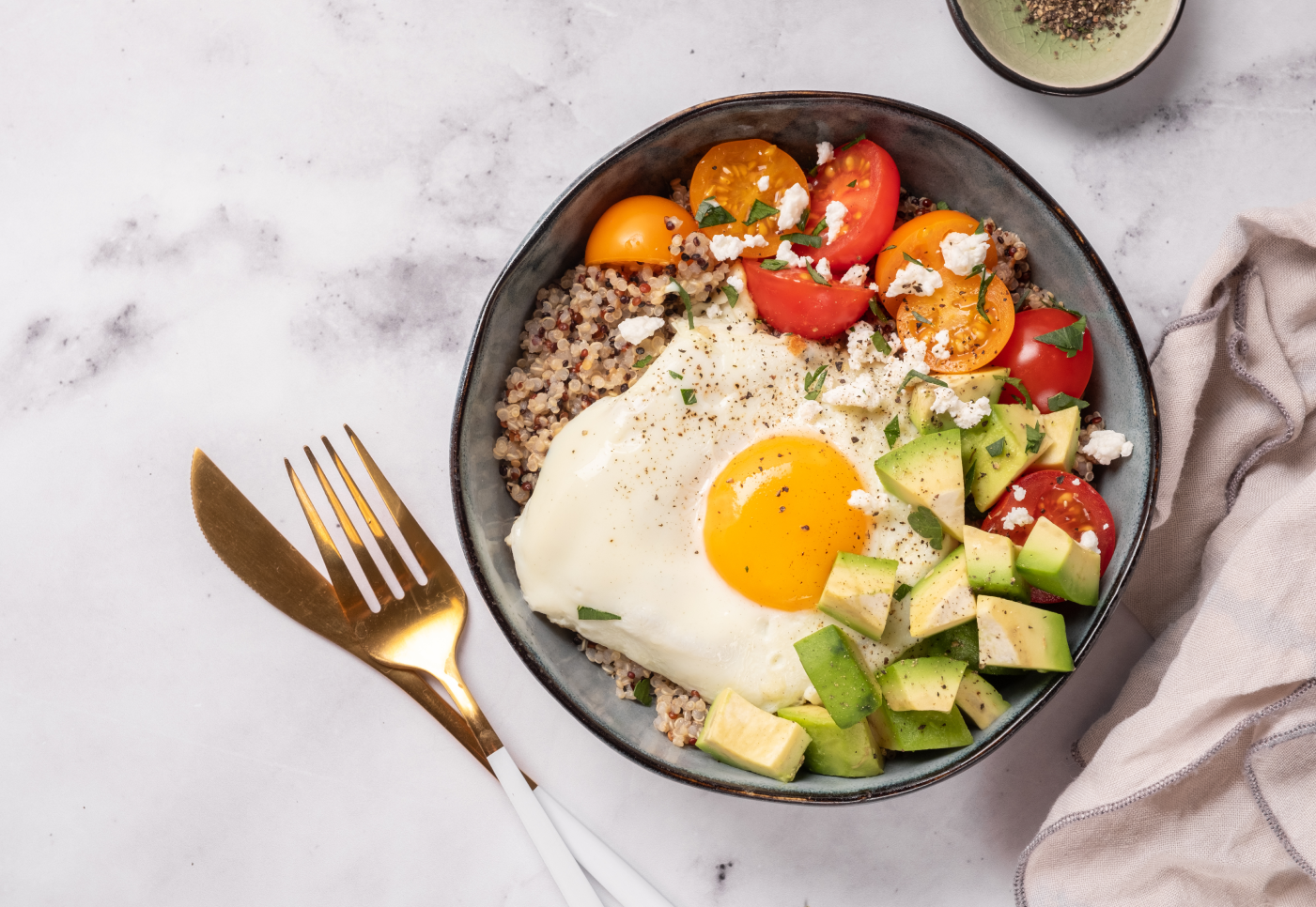
Paleo vs. Keto: The Great Debate
There are so many diets out there today, but we’re firm believers that choosing a lifestyle change is the healthier, long-term path to take. Diets can come and go, much like the weight. But making a conscious choice to commit to a healthy lifestyle will bring you actual benefits and results. While there are still many choices to consider, we’re often asked this one question: Paleo or Keto?
Have you ever wondered where these diets came from? Both the Paleo and Keto diets have their roots deeply embedded in our past, specifically in the era of our hunter-gatherer ancestors.
The Paleo diet, often referred to as the "caveman diet," is based on the principle of eating as our Paleolithic ancestors did. This diet is all about returning to the nutritional habits of our Stone Age forebears, consuming foods they had access to, such as lean meats, fruits, vegetables, and nuts. So when you opt for Paleo, think like a caveman!
The ketogenic diet, on the other hand, also takes a leaf out of history, but from a slightly different angle. While it may not be directly related to the hunter-gatherer lifestyle, it was developed in the 1920s as a diet plan for people with epilepsy. This diet focuses on high-fat, low-carb meals, pushing your body into a state of ketosis, where it burns fat for energy instead of carbs.
Now that we've got the introductions out of the way, let’s dive into the great debate between these two popular diets so you can decide which one is the best diet for you!
What Is Paleo?
Paleo may just be the answer to your weight and health issues. It's a lifestyle that can transform you inside and out. I'm talking healthy, glowing skin and wrinkles that will fade away as quickly as the pounds do! Paleo helps improve your muscle tone, boosts your mood, and heals your body.
Choosing to live the Paleo lifestyle is about simple eating. It’s about a healthy, long-term change. Living Paleo can take away your body’s aches and pains, while also combatting fatigue and chronic inflammation. And these are just a few of the amazing benefits. The Paleo lifestyle is:
- Nutrient-rich
- Anti-inflammatory
- Hormone modulating
Embracing Whole Foods for a Healthy Paleo Lifestyle
It helps your body reset and rebuild a stronger cellular system. It’s a way of life that takes you back to nature and the simple foods that are genuinely beneficial to your body. Foods that are easily absorbed and digested most efficiently by your body, including:
- Vegetables
- Fruits
- Lean meats
- Seafood
- Naturally occurring healthy fats
If our ancestors from the Paleolithic era could thrive off the simplicity that Paleo foods offer, think of what it can do for your body today. By cutting out the processed foods, sugars, and starches we are so accustomed to, we would live much healthier lives and face fewer modern-day diseases. The nutritional value in Paleo foods can offer:
- A balance of protein, fat, and carbohydrates
- The ability to promote and maintain your acid-base balance
- Intestinal health due to enormous amounts of daily fiber
- A healthy fatty-acid balance (Omega-6 to Omega-3 balance)
- Balanced blood sugar levels
Is Paleo Safe?
Adopting the Paleo diet might result in some people experiencing nutrient deficiencies if not properly balanced. Cutting out entire food groups, such as grains, dairy products, and legumes, can limit your intake of certain nutrients, so it's essential to ensure you're getting a well-rounded diet.
What is Keto?
The Keto lifestyle requires a daily diet high in fat, low in carbs, and a moderate amount of protein. It allows your body to burn and utilize fat for its energy instead of carbs. The burning of fat over glucose is known as ketosis.
Understanding Ketosis and Its Role in the Keto Diet
Now let's dive a little deeper into the science behind the Keto diet. When your body enters the state of ketosis, your liver begins to produce molecules called ketones. These are a type of acid that your body can use as a source of energy when glucose (from carbohydrates) is scarce. Your body is incredibly adaptable and can switch to using ketones efficiently when you follow a ketogenic diet.
For some dieters, one of the advantages of producing ketones is that it's indicative that your body is burning fat for fuel, which can be a helpful weight loss strategy. However, it's important to remember that this is just one piece of the puzzle and that both diets require a commitment to healthy, balanced nutrition to be effective.
Why Keto?
Keto can help you lose weight, balance your blood sugar levels, and regulate your insulin levels. Some find Keto ideal for their weight loss goals because your body can burn fat even when you're not physically active. Sounds too good to be true, right? This isn’t a pass to live a lazy lifestyle, but it’s nice to know your body is still hard at work for you even when you’re relaxing or sleeping.
Adopting a Keto lifestyle also offers its share of health benefits. Not only does it help to improve your mood and promote brain health, but it also provides:
- Enhanced endurance and performance
- A boost to your metabolism
- Assisted weight loss
- Healthy cholesterol levels
- Lowered risk for heart disease
Balancing Macronutrients in the Keto Diet
While both Paleo and Keto promote the consumption of whole foods, their philosophies about macronutrients — the carbohydrates, proteins, and fats that provide energy — are very different.
The Keto diet, often tagged as a high-fat diet, emphasizes a drastic reduction in carbohydrate intake. On the other hand, the Paleo diet focuses on the quality of food rather than macronutrient ratios.
On the Paleo diet, you're encouraged to eat healthy foods that were available to our caveman ancestors — meat, fish, fruits, veggies, nuts, and seeds, including high-carb foods like sweet potatoes. Legumes and grains, however, are excluded. So while it may seem like a low-carb diet, it allows more flexibility than Keto when it comes to carbohydrates.
Is Keto Safe?
You may also be asking yourself if Keto is a safe option. Think back to our ancestors again. There were many times the food was scarce, and the next meal was unknown. The body was thrown into natural ketosis to adapt and survive, and they did just fine. As long as you understand how to choose healthy fats, Keto can offer your body many health benefits.
Among some of the beneficial Keto foods to choose from are:
- Wild fish
- Grass-fed dairy
- Avocados
- Non-starchy vegetables
- Low-carb fruits
- Pastured meats
- Bone broth, of course!
The Real Debate
While Paleo offers a healthy long-term lifestyle option, there are still on-going studies to determine if Keto is a healthy long-term choice. Although we see the remarkable benefits that it has to offer, questions of long-term outcomes remain unanswered.
Paleo can help you feel energized and refreshed from the start, while adjusting to Keto can often provide an adjustment period, causing symptoms of the “Keto flu.” Don’t forget, you are reducing your carb intake rather significantly. For many of you, this is forcing your body to adapt to a drastic change.
You may experience cold-like side effects, including:
- Vomiting
- Fatigue
- Dizziness
- Diarrhea
Wondering how to soothe these symptoms? Bone broth contains a minimal amount of carbs that are sure to help you get through this transition.
Similarities and Differences Worth Noting
Both diets have a few things in common. For example, both Paleo and Keto allow you to consume carbs. Considering you are eliminating processed carbs, both Paleo and Keto end up being low-carb options. However, there are a few key differences between these two diets that separate them.
Sugars
First, let's talk about sweeteners. We all crave a little sweetness now and then, right? But not all sweeteners are created equal, especially when it comes to the Paleo and Keto diets. While Paleo allows you to consume natural sugars, Keto does not.
In fact, Keto even eliminates certain vegetables, including potatoes. Since carbs raise your blood sugar levels, your body would no longer be in a state of ketosis. You see, in the Keto world, sugars and high-carbsweeteners are a no-go. Instead, you'll find Keto dieters reaching for low-carbsweeteners such as stevia or erythritol to satisfy their sweet tooth.
For Paleo followers, the approach to sweeteners is a bit different. Paleo promotes the consumption of natural sweeteners like honey, maple syrup, and coconut sugar. While these sweeteners are less processed than many others, they still should be used in moderation due to their sugar content.
Other Food Groups
Now, let's talk about a few food groups. In both Paleo and Keto diets, some food groups are highlighted, while others are noticeably absent. For instance, legumes are a no-go in both diets due to their high carb content.
On the Keto side, healthy fats are the star of the show. Foods rich in good fats like avocados, olive oil, and avocado oil are encouraged, and low-carb fruits and non-starchy vegetables also play a key role.
For the Paleo folks, it's all about natural foods. Leafy greens, lean meats, fruits, and vegetables, basically anything that could be hunted or gathered by our ancestors, are the mainstay.
Another key difference is that Paleo living strongly discourages dairy while Keto encourages certain types. Grass-fed butter and Greek yogurt are among some of the dairy options that are high in fat and low in carbs; perfect for the Keto life.
How Do I Know Which One is Best for Me?
Although there are several similarities between Keto and Paleo, their philosophies are different. Keto is focused on metabolic change through science-based approaches. Paleo focuses on a holistic approach where your food choice is more important than macronutrients. While both offer wonderful benefits, choose the option that best suits your goals and needs.
Let’s say you’re an athlete focused on resistance training. Choosing the Paleo lifestyle would be most beneficial to your goals. It offers you the carbs your body needs to get through those high-intensity workouts. But what if you’re an endurance athlete? Keto would then make a better choice for you. The high fat intake of the Keto lifestyle promotes prolonged endurance by using stored fat as the energy source.
You will also want to consider any current health conditions when choosing between Paleo and Keto. If you have a health condition such as type 2 diabetes, the Keto path can offer you more benefits. Its restrictive carb intake increases insulin sensitivity, so it is a much healthier fit for people with diabetes. You know your body best, so choose the path that is better suited to meet your needs.
The Short-Term and Long-Term
Many people start a diet with a short-term goal, often weight loss. But it's essential to consider how a diet fits into your lifestyle in the long term. The Keto diet, with its emphasis on high-fat, low-carb eating, might result in quick weight loss, which can be appealing. However, some people find it hard to stick to over time due to its strict carbohydrate limit.
The Paleo diet, on the other hand, is often seen as more of a lifestyle change than a short-term diet. With its focus on whole, unprocessed foods, it's often a more sustainable choice for many. Paleo is not just about losing weight — it's about embracing a healthier way of eating that harkens back to our ancestors.
Consulting a Nutritionist or Dietitian
Before you dive headfirst into the Paleo or Keto lifestyle, it can be incredibly beneficial to consult with a dietitian or nutritionist. These professionals can help tailor a meal plan to suit your individual needs and health goals.
When it comes to dietary changes, especially if you're managing a health condition like obesity, high blood pressure, or epilepsy, personalized advice is crucial. What works for one person might not work for another, and both Paleo and Keto have different dietary restrictions and recommendations.
A dietitian or nutritionist can guide you through the nuances of these diets, helping you avoid potential pitfalls and maximize your chances of success.
Ready to make a healthy lifestyle change? We’re here to help you succeed!








